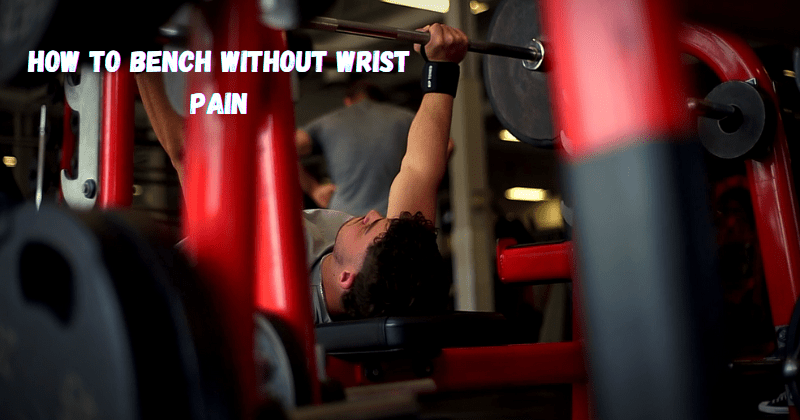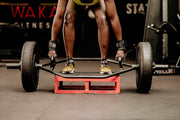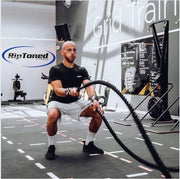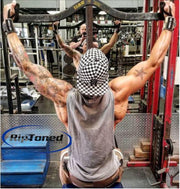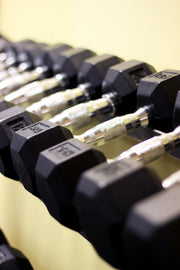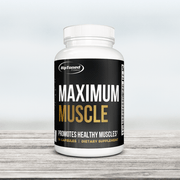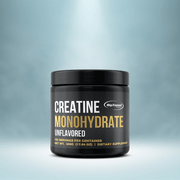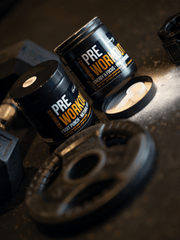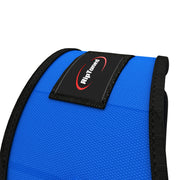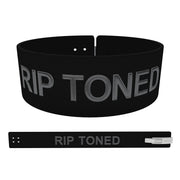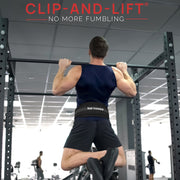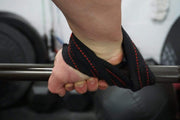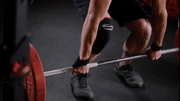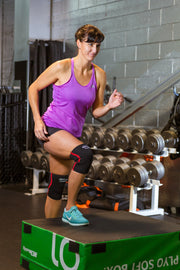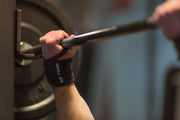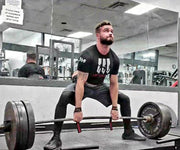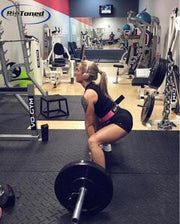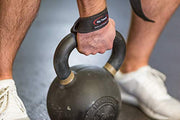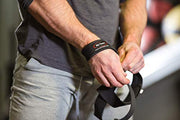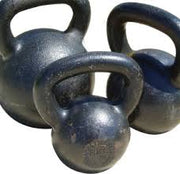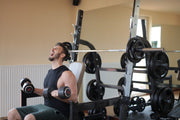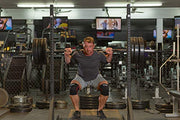Are you trying to build up your arm strength but are frustrated by wrist pain when doing the bench press? You’re not alone in fixing wrist pain! Wrist pain is a common issue experienced by gym-goers and amateur athletes of all levels.
To help solve this problem, we’ve put together 7 tips on how to bench without wrist pain—so that you can focus on improving your form and maximizing your performance rather than worrying about potential injuries. Keep reading as we provide actionable strategies on how to strengthen the neutral wrist position and complete workouts with minimal or no risk of painful strain.
Why Wrist Pain Happens
Wrist pain when bench pressing can be caused by a variety of underlying issues. Whether you’re an experienced lifter or new to the gym, it's important to understand why this pain occurs in order to prevent and alleviate it. Some common causes of wrist pain during bench press include:
- Lack of proper form and technique
- Muscle imbalances
- Poor grip strength
- Limited range of motion in the wrist joint
- Weak forearm muscles
Tips for Benching Without Wrist Pain
Improve your form and technique
To avoid wrist pain during bench press, one of the most important things you can do is to focus on your form and technique. Poor form leads to inefficient workouts and puts unnecessary strain and stress on your wrists and other joints. To improve your bench press form, try the following tips:
- Keep your wrists straight: When holding onto the bar, make sure that your wrists are in a neutral, straight position. Avoid bending them back or letting the bar pull them down towards your forearms.
- Don't grip too tightly: While it’s important to have a firm grip on the bar, gripping too tightly can cause excessive strain on wrist straps on the wrist joint. Instead, focus on maintaining a comfortable and secure grip throughout the movement.
- Keep your elbows close to your body: This will help decrease the load on your wrists and distribute it more evenly throughout your arms and chest muscles.
- Use a thumbless grip: Some lifters find that using a thumbless grip (wrapping their fingers over the bar without their thumbs) helps reduce wrist pain. However, this may not work for everyone, so be sure to experiment with different grip styles to find what works best for you.
- Warm-up properly: Warming up your muscles and joints before any workout is crucial for preventing injury. For bench press, make sure to do some wrist stretches and lightweight sets to prepare your wrists and forearms for the heavier lifts.
Strengthen Your Forearm Muscles
Weak forearm muscles can contribute to wrist pain during bench press. To prevent this, it’s important to include exercises that specifically target your forearms in your workout routine. Some effective forearm strengthening exercises include:
- Wrist curls: Hold a dumbbell or barbell with an underhand grip and curl your wrist upwards towards your forearm, then lower back down. Aim for 3 sets of 10-12 reps.
- Reverse wrist curls: Similar to wrist curls, but with an overhand grip. This will target the muscles on the top of your forearm. Again, aim for 3 sets of 10-12 reps.
- Farmer’s walks: Hold a heavy weight in each hand and walk for a certain distance or time. This not only strengthens your forearms but also improves grip strength.
- Plate pinches: Pinch a weight plate between your fingers and thumb, holding it for as long as possible. This exercise will help increase grip strength and forearm endurance.
Support Your Wrists
In addition to strengthening exercises, proper support can help alleviate wrist pain during bench presses. Consider investing in wrist wraps or using a rolled-up towel or yoga mat as support under your wrists while lifting. These can help keep your wrists in a more neutral position and reduce strain on the joint.
Avoid Overtraining
Overtraining is another common cause of wrist pain during bench press. Make sure to give your wrist and your body enough time to rest and recover between workouts, especially if you’re experiencing pain. It’s also important to listen to your body and not push through excessive discomfort or pain while lifting.
Seek Professional Help
If you continue to experience wrist pain despite following these tips, it may be beneficial to seek advice from a professional. A physical therapist or personal trainer can assess your form and technique and provide tailored exercises and stretches to help alleviate your wrist pain.
Explain how wrist wraps and joint health products can help
Wrist wraps and joint health products can be beneficial in supporting your wrists during bench press. Wrist wraps provide extra stability and support to the wrist joint, helping to prevent excessive strain and pain. They also allow for a tighter grip on the bar, which can improve overall form and technique.
Joint health products such as supplements or creams may also aid in reducing inflammation and promoting joint health in wrist joints, which can help alleviate wrist pain during bench press. However, it’s important to consult with a healthcare professional before adding any new supplements or products into your routine.
Tips for Preventing Future Wrist Pain
To prevent wrist pain from occurring in the first place, here are some additional tips to keep in mind:
- Incorporate wrist and forearm stretches into your warm-up routine
- Gradually increase weight and intensity rather than jumping up too quickly
- Listen to your body and take breaks as needed during workouts
- Focus on overall joint health through proper nutrition and staying hydrated
- Consult with a professional for any chronic or persistent wrist pain
By following these tips, you can minimize your chances of experiencing wrist pain during bench presses and continue to make progress toward your fitness goals.
Long-term side effects of ignoring wrist pain
Ignoring wrist pain during bench press can have long-term consequences on your overall health and fitness. Constantly putting strain on an injured joint can lead to chronic pain, decreased mobility, and even permanent damage. In severe cases of wrist injury, surgery may be required to correct the issue.
Additionally, ignoring wrist pain can also affect your performance in other exercises that require wrist strength and stability, hindering your progress in the long run. It’s important to address any wrist pain, bench pressing, or discomfort early on to prevent these potential long-term effects.
Taking care of your wrists is crucial for maintaining optimal joint health and improving your overall fitness journey. So listen to your body, make necessary adjustments, and consult with a professional to ensure you can continue performing bench presses and other exercises safely and effectively.
FAQs
Does wrist pain during bench press only affect weightlifters?
No, anyone who regularly performs pushing movements can experience bench press wrist pain during bench press. This includes athletes, fitness enthusiasts, and even individuals performing everyday tasks such as push-ups or carrying heavy objects.
Can wrist pain be a sign of a more serious issue?
Yes, in some cases, wrist pain may indicate an underlying condition such as carpal tunnel syndrome or tendinitis. If the pain persists or worsens, seeking medical advice is important to diagnose and treat the issue properly.
Can I make any modifications to the bench press to reduce wrist pain?
Yes, adjusting your grip width or using different equipment, such as dumbbells instead of a barbell, can help alleviate wrist pain during bench press. It’s also important to focus on maintaining proper form and engaging the muscles in your shoulder-width chest rather than relying solely on wrist strength.
Conclusion
Taking care of your wrists is crucial for overall joint health and preventing pain during bench press. Incorporate targeted exercises, use proper wrist support beforehand, avoid overtraining, and seek professional help if needed to ensure you can safely perform bench presses and other movements without experiencing wrist pain.
Remember to listen to your body, make necessary adjustments, and prioritize proper form to prevent injury and continue progressing toward your fitness goals. Let’s keep our wrists upper and robust body healthy for a lifetime of lifting!
Click here to try our wrist wraps that can help protect your wrist.

